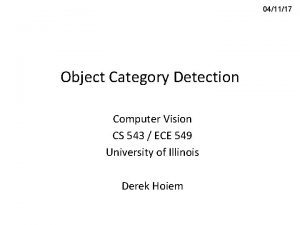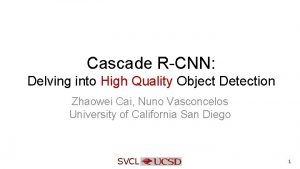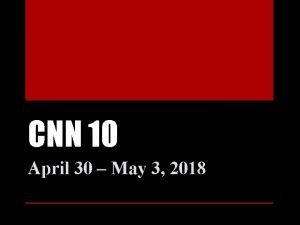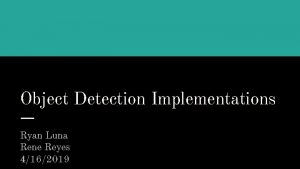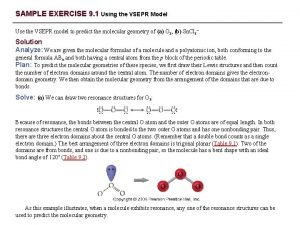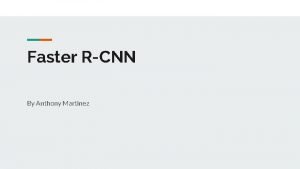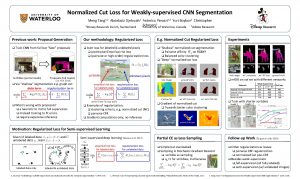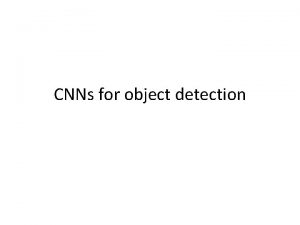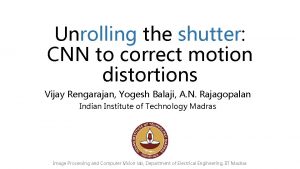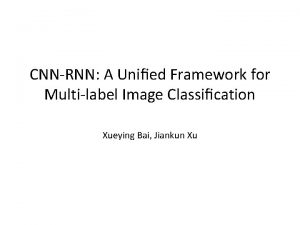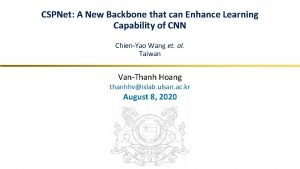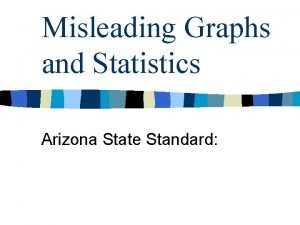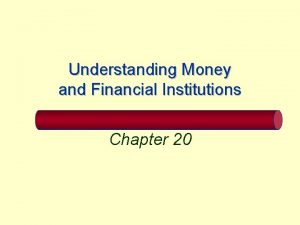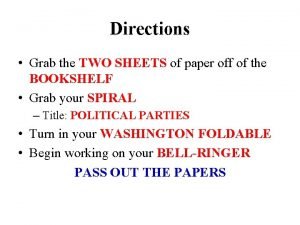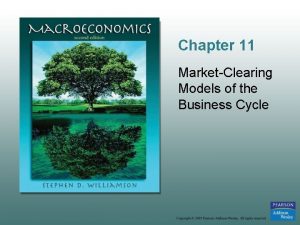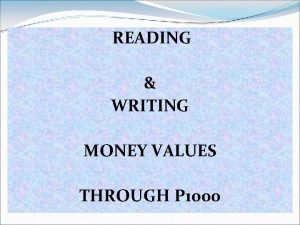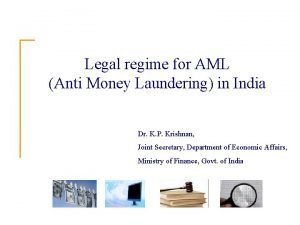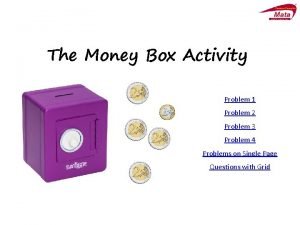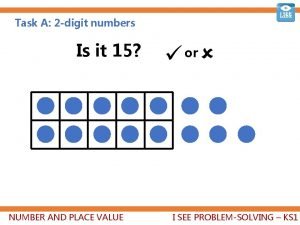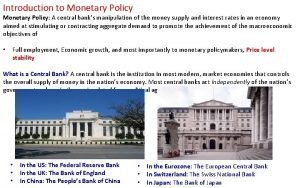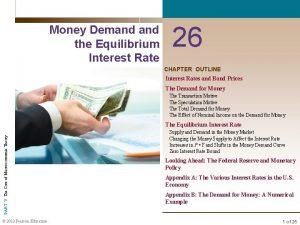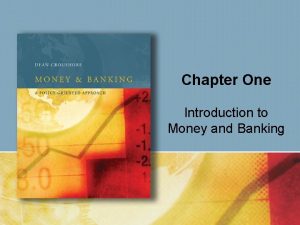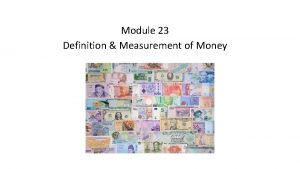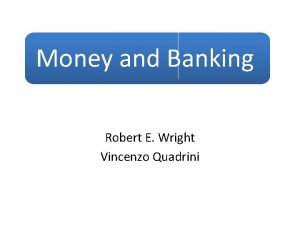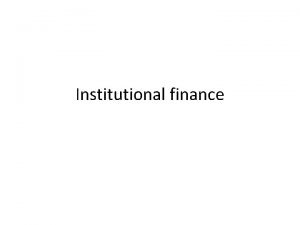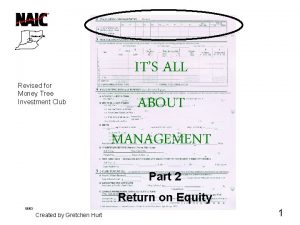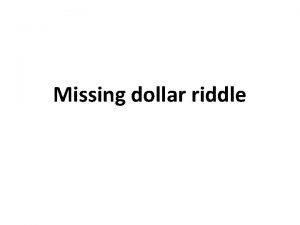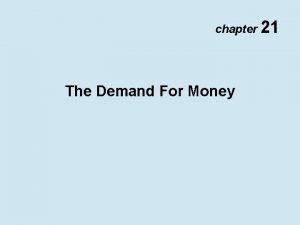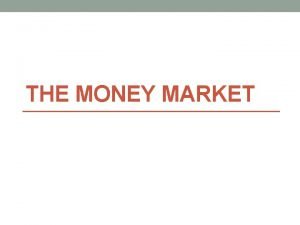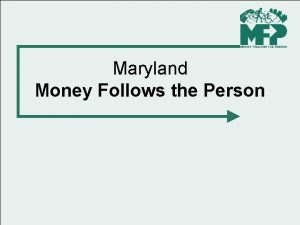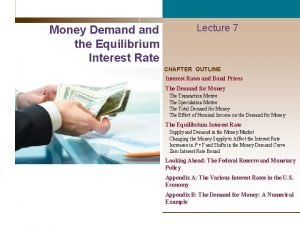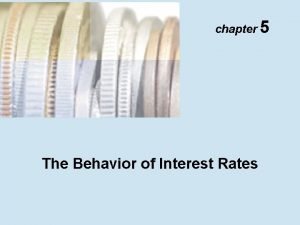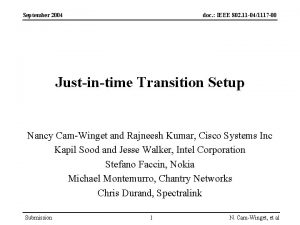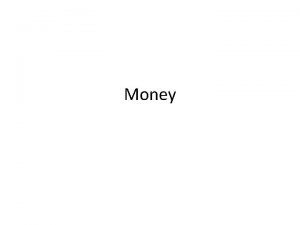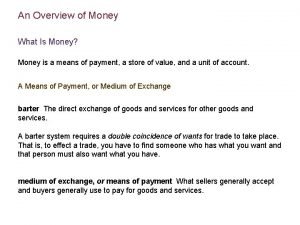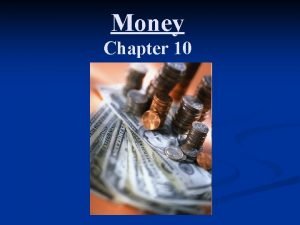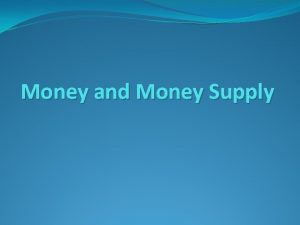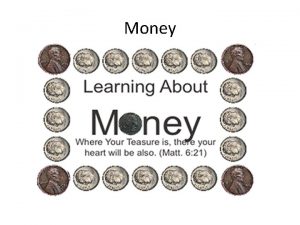http money cnn com20170411investingunitedairlinesstockpassengerflightvideo srtw CNN 041117 unitedairlinesstockpassengerflightvideo































































- Slides: 63

§ http: //money. cnn. com/2017/04/11/investing/united-airlinesstock-passenger-flight-video/? sr=tw. CNN 041117 unitedairlines-stock-passenger-flightvideo 0856 PMVODtop. Link&link. Id=36417766 Dr. Mohammad Alkhamis Kuwait University - College of Business Administration 1

Chapter 8 Risk and Rates of Return § STAND-ALONE RISK § PORTFOLIO RISK § RISK AND RETURN: CAPM/SML Dr. Mohammad Alkhamis Kuwait University - College of Business Administration © Cengage Learning 2 Modified by Dr. Bader Alhashel

What is risk? Kuwait University - College of Business Administration 3

Risk-Return Trade-off § Investors like returns and dislike risk. § There is a fundamental trade-off between risk and return: to let investors take on more risk you have to provide them with higher returns. Kuwait University - College of Business Administration 4

Dr. Mohammad Alkhamis Kuwait University - College of Business Administration 5

Investment Returns § The rate of return on an investment can be calculated as follows: § For example, if $1, 000 is invested and $1, 100 is returned after one year, the rate of return for this investment is: ($1, 100 – $1, 000)/$1, 000 = 10%. Kuwait University - College of Business Administration 6

What is investment risk? § Two types of investment risk § Stand-alone risk: the risk an investor would face if he held only one asset. § Portfolio risk: the risk an investor would face if he held the asset as one of many assets. § Investment risk is related to the probability of earning a low or negative actual return. § The greater the chance of lower than expected or negative returns, the riskier the investment. Kuwait University - College of Business Administration 7

Probability Distributions § Probability distribution: A listing of all possible outcomes, and the probability of each occurrence. § Can be shown graphically. Firm X Firm Y -70 0 15 100 Rate of Return (%) Expected Rate of Return Kuwait University - College of Business Administration 8

Hypothetical Investment Alternatives Economy Recession Prob. T-Bills HT Coll 0. 1 5. 5% -27. 0% USR MP 6. 0% -17. 0% Below avg 0. 2 5. 5% -7. 0% 13. 0% -14. 0% -3. 0% Average 0. 4 5. 5% 15. 0% 0. 0% 3. 0% 10. 0% Above avg 0. 2 5. 5% 30. 0% -11. 0% 41. 0% 25. 0% Boom 0. 1 5. 5% 45. 0% -21. 0% 26. 0% 38. 0% Dr. Mohammad 8 -9 Alkhamis Kuwait University - College of Business Administration 9

Why is the T-bill return independent of the economy? Do T-bills promise a completely risk-free return? § T-bills will return the promised 5. 5%, regardless of the economy. § No, T-bills do not provide a completely risk-free return, as they are still exposed to inflation. Although, very little unexpected inflation is likely to occur over such a short period of time. § T-bills are also risky in terms of reinvestment rate risk. § T-bills are risk-free in the default sense of the word. Kuwait University - College of Business Administration 10

How do the returns of High Tech and Collections behave in relation to the market? § High Tech: Moves with the economy, and has a positive correlation. This is typical. § Collections: Is countercyclical with the economy, and has a negative correlation. This is unusual. Dr. Mohammad Alkhamis 8 -11 Kuwait University - College of Business Administration 11

Calculating the Expected Return § Kuwait University - College of Business Administration 12

Summary of Expected Returns Expected Return High Tech 12. 4% Market 10. 5% US Rubber 9. 8% T-bills 5. 5% Collections 1. 0% High Tech has the highest expected return, and appears to be the best investment alternative, but is it really? Have we failed to account for risk? Dr. Mohammad Alkhamis 8 -13 Kuwait University - College of Business Administration 13

Measuring Stand-Alone Risk: Standard Deviation § Kuwait University - College of Business Administration 14

Standard Deviation for Each Investment Dr. Mohammad Alkhamis 8 -15 σHT = 20% σColl = 13. 2% σM = 15. 2% σUSR = 18. 8% Kuwait University - College of Business Administration 15

Comparing Standard Deviations § The tighter the probability distribution the smaller the standard deviation and risk. Prob. T-bill USR HT 0 5. 5 9. 8 12. 4 Rate of Return (%) Kuwait University - College of Business Administration 16

Comments on Standard Deviation as a Measure of Risk § Standard deviation (σi) measures total, or stand-alone, risk. § The larger σi is, the lower the probability that actual returns will be closer to expected returns. § Larger σi is associated with a wider probability distribution of returns. Kuwait University - College of Business Administration 17

Comparing Risk and Return Kuwait University - College of Business Administration 18

§ If we had two investments with similar returns but different risk, how we choose? § Same risk but different return? § What if it was different return and different risk? Kuwait University - College of Business Administration 19

Measuring Stand-Alone Risk: Coefficient of Variation (CV) § Coefficient of Variation: A standardized measure of risk per unit of return. Kuwait University - College of Business Administration 20

Illustrating the CV as a Measure of Relative Risk § σA = σB , but A is riskier because of a larger probability of losses. In other words, the same amount of risk (as measured by σ) for smaller returns. Prob. A B 0 Rate of Return (%) Kuwait University - College of Business Administration 21

Problem 8 -1 Kuwait University - College of Business Administration 22

Investor Attitude towards Risk § Risk aversion – assumes investors dislike risk and require higher rates of return to encourage them to hold riskier securities. § Risk premium – the difference between the return on a risky asset and a riskless asset, which serves as compensation for investors to hold riskier securities. Kuwait University - College of Business Administration 23

Portfolio Construction: Risk and Return § Assume a two-stock portfolio is created with $50, 000 invested in both HT and Collections. § A portfolio’s expected return is a weighted average of the returns of the portfolio’s component assets. § Standard deviation is a little more tricky and requires that a new probability distribution for the portfolio returns be devised. Kuwait University - College of Business Administration 24

Calculating Portfolio Expected Return Kuwait University - College of Business Administration 25

Calculating Portfolio Standard Deviation and CV Kuwait University - College of Business Administration 27

Comments on Portfolio Risk Measures § σp = 3. 4% is much lower than the σi of either stock (σHT = 20. 0%; σColl. = 13. 2%). § σp = 3. 4% is lower than the weighted average of HT and Coll. ’s σ (16. 6%). § Therefore, the portfolio provides the average return of component stocks, but lower than the average risk. § Why? Negative correlation between stocks. Kuwait University - College of Business Administration 28

General Comments about Risk § Kuwait University - College of Business Administration 29

Returns Distribution for Two Perfectly Negatively Correlated Stocks (ρ = -1. 0) Kuwait University - College of Business Administration 30

Returns Distribution for Two Perfectly Positively Correlated Stocks (ρ = 1. 0) Stock M’ Stock M Portfolio MM’ 25 25 25 15 15 15 0 0 0 -10 -10 § If correlation is perfectly positive, the portfolio has the same risk. § Diversification is only good when assets or stocks are not perfectly positively correlated Dr. Mohammad Alkhamis Kuwait University - College of Business Administration 31

Partial Correlation, ρ = +0. 35 Kuwait University - College of Business Administration 32

Creating a Portfolio: Beginning with One Stock and Adding Randomly Selected Stocks to Portfolio § σp decreases as stocks added, because they would not be perfectly correlated with the existing portfolio. § Expected return of the portfolio would remain relatively constant. § Eventually the diversification benefits of adding more stocks dissipates (after about 10 stocks), and for large stock portfolios, σp tends to converge to 20%. Kuwait University - College of Business Administration 33

Illustrating Diversification Effects of a Stock Portfolio Kuwait University - College of Business Administration 34

Breaking Down Sources of Risk Stand-alone risk = Market risk + Diversifiable risk § Market risk – portion of a security’s stand-alone risk that cannot be eliminated through diversification. Measured by beta. § Diversifiable risk – portion of a security’s stand-alone risk that can be eliminated through proper diversification. Kuwait University - College of Business Administration 35

Failure to Diversify § If an investor chooses to hold a one-stock portfolio (doesn't diversify), would the investor be compensated for the extra risk they bear? § NO! § Stand-alone risk is not important to a well-diversified investor. § Rational, risk-averse investors are concerned with σp, which is based upon market risk. § There can be only one price (the market return) for a given security. § No compensation should be earned for holding unnecessary, diversifiable risk. Kuwait University - College of Business Administration 36

Problem 8 -18 Kuwait University - College of Business Administration 37 37

Dr. Mohammad Alkhamis Kuwait University - College of Business Administration 38

Capital Asset Pricing Model (CAPM) § Model linking risk and required returns. CAPM suggests that there is a Security Market Line (SML) that states that a stock’s required return equals the risk-free return plus a risk premium that reflects the stock’s risk after diversification. ri = r. RF + (r. M – r. RF)bi § Primary conclusion: The relevant riskiness of a stock is its contribution to the riskiness of a well-diversified portfolio. Kuwait University - College of Business Administration 39

Beta § Measures a stock’s market risk, and shows a stock’s volatility relative to the market. § Indicates how risky a stock is if the stock is held in a welldiversified portfolio. Kuwait University - College of Business Administration 40

Comments on Beta § If beta = 1. 0, the security is just as risky as the average stock. § If beta > 1. 0, the security is riskier than average. § If beta < 1. 0, the security is less risky than average. § Most stocks have betas in the range of 0. 5 to 1. 5. Kuwait University - College of Business Administration 41

Can the beta of a security be negative? § Yes, if the correlation between Stock i and the market is negative (i. e. , ρi, m < 0). § If the correlation is negative, the regression line would slope downward, and the beta would be negative. § However, a negative beta is highly unlikely. Kuwait University - College of Business Administration 42

Calculating Betas § Well-diversified investors are primarily concerned with how a stock is expected to move relative to the market in the future. § Without a crystal ball to predict the future, analysts are forced to rely on historical data. A typical approach to estimate beta is to run a regression of the security’s past returns against the past returns of the market. § The slope of the regression line is defined as the beta coefficient for the security. Kuwait University - College of Business Administration 43

Illustrating the Calculation of Beta _ ri . 20 15 . 10 Year r. M ri 1 15% 18% 2 -5 -10 3 12 16 5 -5 . 0 5 -5 -10 10 15 20 r. M Regression line: ^ ri = -2. 59 + 1. 44 r. M ^ Kuwait University - College of Business Administration 44

Beta Coefficients for HT, Coll, and T-Bills HT: b = 1. 32 ri 40 20 T-bills: b = 0 -20 0 20 40 r. M Coll: b = -0. 87 -20 Kuwait University - College of Business Administration 45

Stock A has an expected return of 7%, a standard deviation of expected returns of 35%, a correlation coefficient with the market of -0. 3, and a beta coefficient of -0. 5. Stock B has an expected return of 12%, a standard deviation of expected returns of 10%, a correlation coefficient with the market of 0. 7, and a beta coefficient of 1. 0. Which security is riskier? Why? Kuwait University - College of Business Administration 46

Calculating Portfolio Beta Kuwait University - College of Business Administration 47

Problem 8 -2 Kuwait University - College of Business Administration 48

Problem 8 -14 Kuwait University - College of Business Administration 49

The Security Market Line (SML): Calculating Required Rates of Return SML: ri = r. RF + (r. M – r. RF)bi ri = r. RF + (RPM)bi § Assume the yield curve is flat and that r. RF = 5. 5% and RPM = 5. 0%. Kuwait University - College of Business Administration 50

What is the market risk premium? § Additional return over the risk-free rate needed to compensate investors for assuming an average amount of risk. § Its size depends on the perceived risk of the stock market and investors’ degree of risk aversion. § Varies from year to year, but most estimates suggest that it ranges between 4% and 8% per year. Kuwait University - College of Business Administration 51

Illustrating the Security Market Line SML: ri = 5. 5% + (5. 0%)bi ri (%) SML . . . HT r. M = 10. 5 r. RF = 5. 5 -1 . Coll. 0 . USR T-bills 1 2 Risk, bi Kuwait University - College of Business Administration 53

Problem 8 -9 Kuwait University - College of Business Administration 54

Problem 8 -19 Kuwait University - College of Business Administration 55

An Example: Equally-Weighted Two-Stock Portfolio § Create a portfolio with 50% invested in HT and 50% invested in Collections. § The beta of a portfolio is the weighted average of each of the stock’s betas. b. P = w. HTb. HT + w. Collb. Coll b. P = 0. 5(1. 32) + 0. 5(-0. 87) b. P = 0. 225 Kuwait University - College of Business Administration 56

Calculating Portfolio Required Returns § The required return of a portfolio is the weighted average of each of the stock’s required returns. r. P = w. HTr. HT + w. Collr. Coll r. P = 0. 5(12. 10%) + 0. 5(1. 15%) r. P = 6. 625% § Or, using the portfolio’s beta, CAPM can be used to solve for expected return. r. P = r. RF + (RPM)b. P r. P = 5. 5% + (5. 0%)(0. 225) r. P = 6. 625% Kuwait University - College of Business Administration 57

Is it possible to construct a portfolio of real-world stocks that has a required rate if return equal to the risk-free rate? Kuwait University - College of Business Administration 58

Factors That Change the SML § What if investors raise inflation expectations by 3%, what would happen to the SML? ri (%) ΔI = 3% 13. 5 10. 5 SML 2 SML 1 8. 5 5. 5 Risk, bi 0 0. 5 1. 0 1. 5 Kuwait University - College of Business Administration 59

Factors That Change the SML § What if investors’ risk aversion increased, causing the market risk premium to increase by 3%, what would happen to the SML? ri (%) ΔRPM = 3% SML 2 SML 1 13. 5 10. 5 5. 5 Risk, bi 0 0. 5 1. 0 1. 5 Kuwait University - College of Business Administration 60

Problem 8 -15 Kuwait University - College of Business Administration 61

Verifying the CAPM Empirically § The CAPM has not been verified completely. § Statistical tests have problems that make verification almost impossible. § Some argue that there additional risk factors, other than the market risk premium, that must be considered. Kuwait University - College of Business Administration 62

More Thoughts on the CAPM § Investors seem to be concerned with both market risk and total risk. Therefore, the SML may not produce a correct estimate of ri. ri = r. RF + (r. M – r. RF)bi + ? ? ? § CAPM/SML concepts are based upon expectations, but betas are calculated using historical data. A company’s historical data may not reflect investors’ expectations about future riskiness. Kuwait University - College of Business Administration 63

Some Concluding Thoughts § There is a trade-off between risk and return. To achieve a higher expected return, an investors needs to take higher risk. § Diversification is crucial. § Real returns are what matters, not nominal returns. § The risk of an investment depends how long you plan to hold it. Stocks are very risky on the short-term but their risk is reduced if you hold them over the long-run. Kuwait University - College of Business Administration 64

Some Concluding Thoughts § While historical data can be helpful in telling us about the risks and returns of investments, there is no guarantee that the past will repeat itself. Kuwait University - College of Business Administration 65
 Colour 041117
Colour 041117 Money money money team
Money money money team The great gatsby historical background
The great gatsby historical background Great gatsby meaning
Great gatsby meaning Context of the great gatsby
Context of the great gatsby Money smart money match
Money smart money match Money on money multiple
Money on money multiple Siat ung sistem informasi akademik
Siat ung sistem informasi akademik Http //mbs.meb.gov.tr/ http //www.alantercihleri.com
Http //mbs.meb.gov.tr/ http //www.alantercihleri.com Jay contoy cnn
Jay contoy cnn Feature map in cnn
Feature map in cnn Cnn 10 worksheet
Cnn 10 worksheet Cascade r-cnn
Cascade r-cnn Cnn backpropagation
Cnn backpropagation Pretrained cnn
Pretrained cnn Cnn 10 may 4
Cnn 10 may 4 High number
High number Normalized cut loss for weakly-supervised cnn segmentation
Normalized cut loss for weakly-supervised cnn segmentation Mask r cnn
Mask r cnn Vsepr exercise
Vsepr exercise Text classification with cnn
Text classification with cnn Convolution neural network ppt
Convolution neural network ppt Cnn.com
Cnn.com Cnn
Cnn Alex burns cnn
Alex burns cnn Normalized cut loss for weakly-supervised cnn segmentation
Normalized cut loss for weakly-supervised cnn segmentation Move19x
Move19x Backpropagation cnn
Backpropagation cnn Meshcnn: a network with an edge
Meshcnn: a network with an edge Sliding window detector
Sliding window detector Cnn
Cnn Beam search
Beam search Cspnet
Cspnet Cnn 10 4/5
Cnn 10 4/5 Misleading graphs cnn
Misleading graphs cnn Cnn
Cnn Money characteristics
Money characteristics Hamilton vs jefferson chart
Hamilton vs jefferson chart Friedman lucas money surprise model
Friedman lucas money surprise model How to write 50 centavos
How to write 50 centavos Echa award prize
Echa award prize Stages of money laundering process
Stages of money laundering process 林修荣电子邮箱
林修荣电子邮箱 Money box problem
Money box problem 10 digit number money
10 digit number money Fractional reserve banking
Fractional reserve banking Money demand curve
Money demand curve Introduction of money and banking
Introduction of money and banking Money is measured in which scale
Money is measured in which scale Quadrini vincenzo
Quadrini vincenzo Assessing value for money
Assessing value for money Organised components of money market
Organised components of money market Mobile money business model
Mobile money business model Money tree investment
Money tree investment Boundary rules in accounting
Boundary rules in accounting Missing dollar paradox solution
Missing dollar paradox solution Love your money
Love your money Quantity theory of money equation
Quantity theory of money equation Objectives of money market
Objectives of money market Money follows the person maryland
Money follows the person maryland Islamic accepted bills
Islamic accepted bills Money demand and interest rate
Money demand and interest rate Save your time and money
Save your time and money What shifts money demand
What shifts money demand
